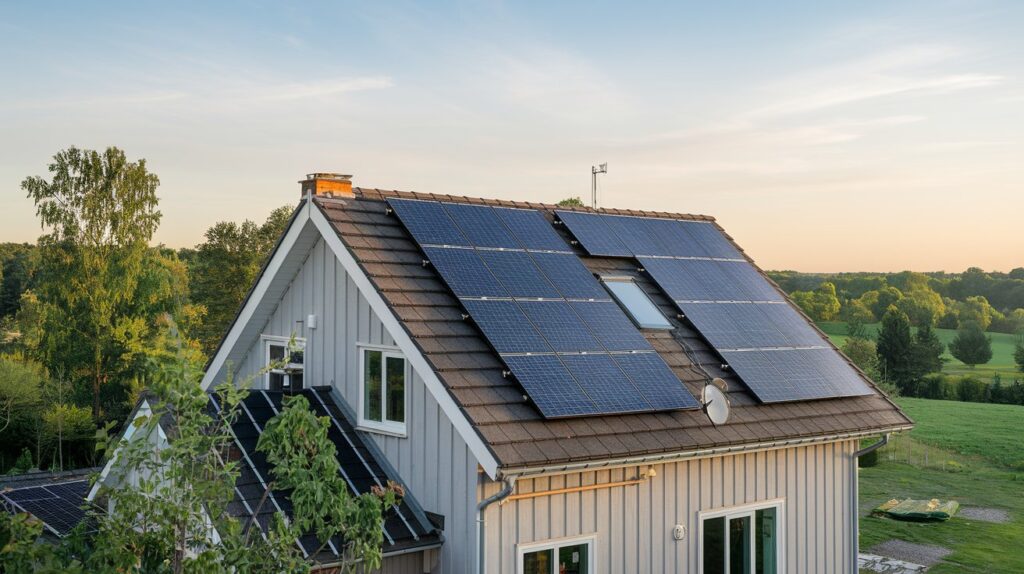Switching to solar energy can feel like taking a step into the future, but it’s also a decision rooted in practicality and long-term benefits. As homeowners seek ways to lower their utility bills and reduce their environmental impact, solar power has become a leading choice. The shift to solar isn’t just about panels on the roof-it’s about understanding the process, anticipating the adjustments, and knowing what kind of performance to expect. We will explore what really happens when you decide to go solar, from your first consultation to that first electricity bill that makes you do a double take-in a good way. We will help you navigate the changes, understand the commitments, and ultimately maximize the benefits of your transition to solar panels. Whether you’re motivated by sustainability or savings, it’s important to know exactly what to expect every step of the way.
Understanding the Key Changes That Come With Solar Panel Installation
Initial Assessment and Consultation: What Happens First?
Before the panels are installed, a discovery process needs to take place. A solar provider will typically visit your home or assess your property remotely to determine whether solar energy is a viable option. This isn’t just a formality. Factors such as the direction your roof faces, the amount of shade you receive, and your roof’s overall condition significantly impact the effectiveness of your solar system. Companies like North Valley Solar Power often utilize drone technology, satellite mapping, or even a comprehensive site inspection to ensure that every variable is accounted for.
Homeowners should also be prepared to provide past utility bills so the provider can estimate the monthly energy usage of their home. This helps them design a system that meets your energy needs. The consultation phase is a two-way street-you’ll also be able to ask questions about financing options, warranties, timelines, and the expected output of your system. Think of this as your planning session. No panels will be installed until every detail is covered.
The Installation Timeline and What It Looks Like
Once you’ve approved the design and signed the paperwork, things start moving toward installation. Contrary to what some people expect, the installation itself is not a multi-week endeavor. In most residential cases, the physical setup takes only one to three days. The longer wait usually happens before the panels even arrive-this is the permitting stage. Solar providers must obtain the necessary permits from your local municipality and often coordinate with your utility company to ensure everything is legally compliant. Once approved, the actual installation is fast and minimally disruptive.
You might see scaffolding go up or hear power tools during daylight hours, but the crew usually wraps up quickly. After installation, there’s another round of inspections, and finally, your utility provider will connect your system to the grid. Some homeowners are surprised that the system isn’t immediately “on” after installation, but rest assured-once all clearances are given, you’ll be up and running.
Financial Expectations: Upfront Costs vs. Long-Term Savings
The financial aspect of solar installation can feel like the most confusing part, but understanding the cost structure can alleviate many concerns. Yes, solar panels come with a significant upfront price tag. However, there are multiple ways to offset this cost. Options such as solar loans, leasing programs, and power purchase agreements can help homeowners get started with little to no upfront cost.
Additionally, there are federal tax incentives, such as the Solar Investment Tax Credit (ITC), and many states offer additional rebates or performance-based incentives. While it may feel like a steep investment at first, the monthly savings on your electricity bills quickly become evident. Most homeowners experience a significant reduction in their power bills-some even eliminate them, depending on their location and energy usage. Over the lifespan of your system, which often exceeds 25 years, the savings can far exceed your initial investment. This shift in monthly budgeting is one of the most satisfying parts of the transition.
System Monitoring and Performance: What You’ll Notice Daily
Once your solar panels are connected to the grid, it’s not just “set it and forget it.” Most solar systems today come equipped with performance monitoring tools that enable you to track your energy production in real-time. You’ll likely be given access to a mobile app or web portal where you can view how many kilowatt-hours you’re generating, how much you’re using, and what’s being sent back to the grid. It’s like getting a backstage pass to your power plant.
Daily energy production will vary depending on weather, time of year, and your energy usage habits, but you’ll begin to notice patterns. If you’re enrolled in a net metering program, your utility bill will show credits for excess power you’ve generated and sent back to the grid. This interactive relationship with your energy use often changes how people view electricity. You become more aware of peak hours, device usage, and ways to conserve energy further.
Making the switch to solar energy is a rewarding journey that brings both environmental and financial benefits. However, it’s not a flip-of-the-switch process. From the initial consultation and planning stages to the final connection and monitoring setup, homeowners experience several steps that ensure their system is efficient and long-lasting. Companies like North Valley Solar Power make the transition smoother with high-quality products and attentive service, but it’s your awareness and readiness that will make the biggest difference.
Knowing what to expect helps you prepare, stay informed, and maximize the value of your investment. Solar isn’t just a trendy upgrade-it’s a practical, long-term solution for those who want to take control of their energy use. With the right mindset and preparation, your journey to solar energy will be one of the smartest home improvements you can make.

